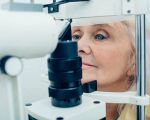- 1-Understanding-Dry-Eye-Syndrome
- 2-Causes-and-Risk-Factors-of-Dry-Eye
- 3-Effective-Management-Strategies-for-Dry-Eye
- 4-Lifestyle-and-Environmental-Adaptations
- 5-Professional-Support-and-Treatment-Options
- 6-Real-Life-Experience-and-Insights
1. Understanding Dry Eye Syndrome
Dry eye syndrome is a common yet often misunderstood condition that affects millions of people worldwide. It occurs when your eyes do not produce enough tears or when the tears evaporate too quickly, leading to discomfort, irritation, and sometimes impaired vision. Managing dry eye syndrome effectively requires a clear understanding of its symptoms, causes, and impact on daily life. People often experience redness, a gritty sensation, burning, or excessive tearing as the eyes attempt to compensate for dryness. Recognizing these signs early can make a significant difference in controlling the condition and preventing long-term damage.
The importance of addressing dry eye symptoms promptly cannot be overstated. Ignoring these signs may lead to complications such as inflammation or corneal damage, which can impair vision and affect quality of life. This article explores comprehensive strategies and insights that help individuals manage dry eye syndrome effectively, providing practical advice that can be applied immediately.
2. Causes and Risk Factors of Dry Eye
Dry eye syndrome arises from a variety of causes, often interacting together. The most common reasons include reduced tear production due to aging or medical conditions like Sjögren's syndrome, environmental factors such as dry or windy climates, prolonged screen time, and the side effects of medications like antihistamines or antidepressants.
Hormonal changes, especially in women during menopause, can also play a critical role in tear film instability. Furthermore, contact lens wearers and people who have undergone eye surgeries such as LASIK may be at increased risk. Identifying the specific cause is essential to tailoring an effective management plan.
For example, someone who spends many hours in front of digital devices might suffer from reduced blinking, worsening tear evaporation. Understanding these details allows for a more focused and successful approach to relief.
3. Effective Management Strategies for Dry Eye
Managing dry eye syndrome effectively is a multi-layered process that blends daily habits, environmental adjustments, and medical interventions. First and foremost, artificial tears or lubricating eye drops are a cornerstone for immediate relief. Selecting the right product, ideally recommended by eye care professionals, helps maintain moisture without causing irritation.
In addition to topical solutions, eyelid hygiene plays a pivotal role. Warm compresses and gentle eyelid massages can improve oil gland function, reducing tear evaporation. For chronic cases, treatments such as prescription eye drops that reduce inflammation or procedures to block tear drainage canals may be necessary.
It’s important to consult with specialists who can personalize your treatment plan. Our website, Eye Docs, offers tailored recommendations on products and services specifically designed for dry eye sufferers, ensuring you find what works best for your unique needs.
4. Lifestyle and Environmental Adaptations
Small but strategic changes in your environment and daily routine can drastically improve dry eye symptoms. Increasing indoor humidity, avoiding direct airflow from fans or air conditioners, and wearing protective eyewear in windy or sunny conditions reduce tear evaporation significantly.
Limiting screen time or practicing the 20-20-20 rule—looking at something 20 feet away for 20 seconds every 20 minutes—helps maintain natural blinking rates. Staying hydrated and adopting a diet rich in omega-3 fatty acids, found in fish and flaxseed, supports tear production and ocular surface health.
These adjustments might seem minor, but they collectively build a stronger defense against dry eye symptoms. Personalized advice and product suggestions are available through Eye Docs to help you implement these adaptations smoothly.
5. Professional Support and Treatment Options
When home remedies and over-the-counter products don’t suffice, seeking professional care becomes essential. Eye care specialists use diagnostic tools like tear film analysis and meibomian gland evaluation to uncover underlying causes.
Advanced treatments such as intense pulsed light (IPL) therapy or prescription medications targeting inflammation can offer relief where standard approaches fall short. In severe cases, surgical options may be explored.
Choosing the right professional support can be overwhelming. Eye Docs provides guidance on finding qualified practitioners and accessing the latest treatments, empowering patients to take control of their eye health confidently.
6. Real-Life Experience and Insights
Consider the case of Anna, a graphic designer who struggled with persistent dry eye symptoms due to long hours at the computer. By incorporating regular eye drops, warm compresses, and lifestyle changes recommended by her eye specialist, she noticed significant improvement within weeks. Anna’s story highlights how personalized care and consistent management can transform quality of life.
Another example is John, who experienced dry eye after LASIK surgery. With professional guidance and tailored treatments sourced through Eye Docs, John managed to regain comfort and clarity in his vision.
These real-life experiences emphasize that managing dry eye syndrome effectively is achievable with the right knowledge, tools, and support. Listening to your body and working closely with professionals ensures the best outcomes.








